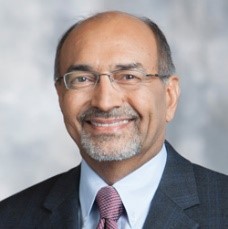
- This event has passed.
Webinar: The Economics of Flexible Solar for Electricity Markets in Transition
August 18, 2020 @ 2:00 pm - 3:00 pm EDT
Download Webinar Recording & Presentation
Featured Speakers:
- Steven Dahlke, Ph.D., Fellow, Solar Energy Innovators Program
- Mahesh Morjaria, formerly VP of Systems Development at First Solar
 Steven Dahlke has worked for nearly a decade as a researcher and analyst in the areas of energy and the environment. He currently is a Fellow in the Solar Energy Innovators Program, supported by the U.S. Department of Energy Solar Energy Technologies Office and the Oak Ridge Institute for Science and Education. The program supports research and development to improve the flexibility and performance of solar technologies to contribute to a reliable and resilient U.S. electric grid. Steven has a Ph.D. in Mineral and Energy Economics from the Colorado School of Mines, and lives in the Denver area.
Steven Dahlke has worked for nearly a decade as a researcher and analyst in the areas of energy and the environment. He currently is a Fellow in the Solar Energy Innovators Program, supported by the U.S. Department of Energy Solar Energy Technologies Office and the Oak Ridge Institute for Science and Education. The program supports research and development to improve the flexibility and performance of solar technologies to contribute to a reliable and resilient U.S. electric grid. Steven has a Ph.D. in Mineral and Energy Economics from the Colorado School of Mines, and lives in the Denver area.
Dr. Mahesh Morjaria is one of the founders of REPlantSolutions, a First Solar spin-off, whose mission is to bring advanced solar plant technologies and know-how developed at First Solar to the industry. Previously, he was a VP at First Solar leading the R&D effort in utility-scale solar plants. Over the past decade, he has established himself as an industry-recognized leader in the area of solar generation and in addressing challenges associated with integrating solar into the power grid. Dr. Morjaria previously worked at GE for twenty years where he held various leadership positions including a significant role in wind energy. His academic credits include B.Tech from IIT Bombay and M.S. & Ph.D. from Cornell University.
Moderator: Charlie Smith, ESIG
 Registration Cost: FREE
Registration Cost: FREE
Q&A Session: We will be using the slido platform for Q&A. Please submit your questions and follow-along during the event at this link.
Webinar Abstract: This webinar will discuss the results and implications of new research investigating the economics of flexible solar operation in electricity markets. The previous study conducted by First Solar demonstrated that flexible solar reduces production costs and emissions for a small integrated utility under high solar penetration. In this research, an economic dispatch model for the Western U.S. was built to study market characteristics of flexible solar operation with rising renewable penetrations. Flexible solar in this context refers to the ability to quickly adjust PV plant output to any setpoint below its forecasted maximum output. This is compared to an inflexible scenario where solar is a must-run resource where curtailment only occurs for reliability purposes. The model estimates $172 million in annual system cost savings for California from flexible solar operation at a 30% annual solar energy penetration. This is approximately 1% of the total value of California electricity market transactions. Including neighboring states increases annual cost savings to $268 million. Benefits primarily come from flexible solar providing ramping support and overgeneration relief at lower cost. This research was conducted as a partnership between First Solar, the US DOE Solar Energy Innovators Program, and the National Renewable Energy Laboratory.

